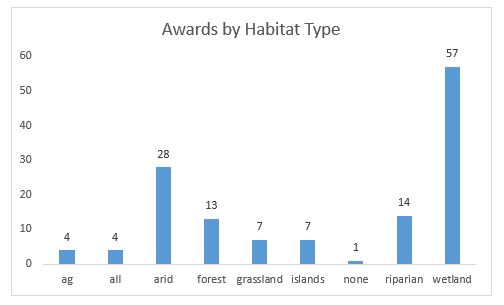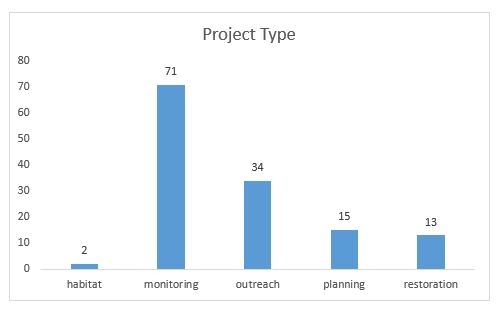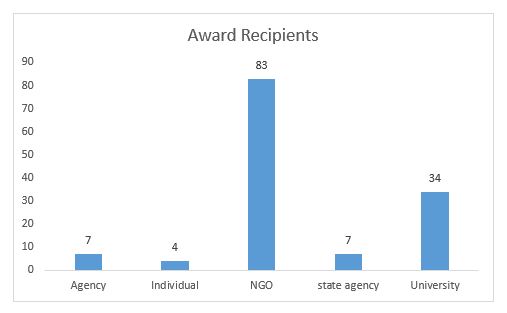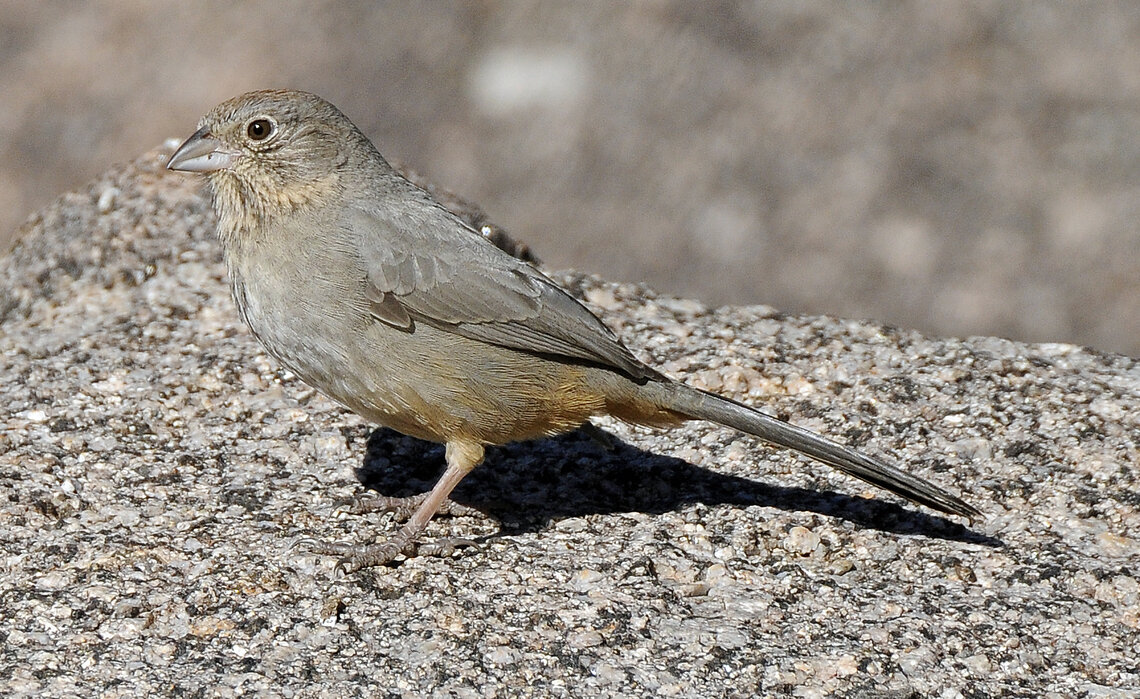Canyon Towhee, photo courtesy of Dave Krueper.
By Adam Hannuksela
Since 2001, the Sonoran Joint Venture has awarded more than $1.3 million dollars to partners in our region. Our process of awarding grants has been through the federal government with a local review committee. The review committee consists of SJV staff, three members of the Science Working Group from the United States, and three members from Mexico. The awards have supported a diverse array of projects and have been a source of seed money for many organizations and researchers. This allowed funds and time to be devoted to important projects that otherwise might have had a difficult time finding support. We have given out 135 awards over 20 years. We award grants to organizations based in Mexico and the United States, 83 out of 135 (61%) were awarded to U.S. based organizations. Many of these American recipients have been part of a binational partnership, with all or some aspect of the work completed in Mexico and the United States. Approximately half of awards are for work carried out in Mexico, which reflects the binational character of our management board, the Science Working Group, and our work.

Among the habitats that have benefitted most from our awards program are wetlands (42% of awards) and arid lands (21%), while riparian areas and forests each make up 10% of awards (Figure 1). We have also funded almost 2 dozen projects in grasslands, islands, and agricultural areas. With over 3200 km of coastline in the SJV region and a greater than 30% decline of breeding birds in arid lands since 1970, concentrating on wetlands and arid lands is essential. Projects focused on waterbirds and landbirds have made up most of our awards given, making a lasting impact in the work of our partners.

Many areas and birds in our region are under-served and have little data compared to other areas of the continent. Since our inception, we have given 71 awards, or 52%, to monitoring projects (Figure 2). Monitoring is a priority for the SJV, and we strive to include any monitoring with other, large-scale, standardized programs. With our vast area and a lack of long-term data, bird and habitat monitoring is crucial to planning and tracking the usefulness of management and conservation activities. Projects that emphasized outreach made up 25% of awards, the second largest group and another priority. We include human dimensions in our conservation planning and recognize the importance of projects that seek to expand the reach of conservation work in the SJV region through social science application.

As far as recipients of awards, we have given the most grants (61%) to non-governmental organizations based in the U.S. and Mexico, with Universities being the next highest with 25% of awards (Figure 3). In the past we have given 14 awards, or 10%, to state or federal agencies. With our new partnership with the International Community Foundation, we will no longer be able to give awards directly to state or federal agencies. However, we can continue to provide support through relationships with partners and key initiatives for bird and habitat conservation. We look forward to this new era in the SJV Awards Program. Please reach out to Adam Hannuksela with any questions.

